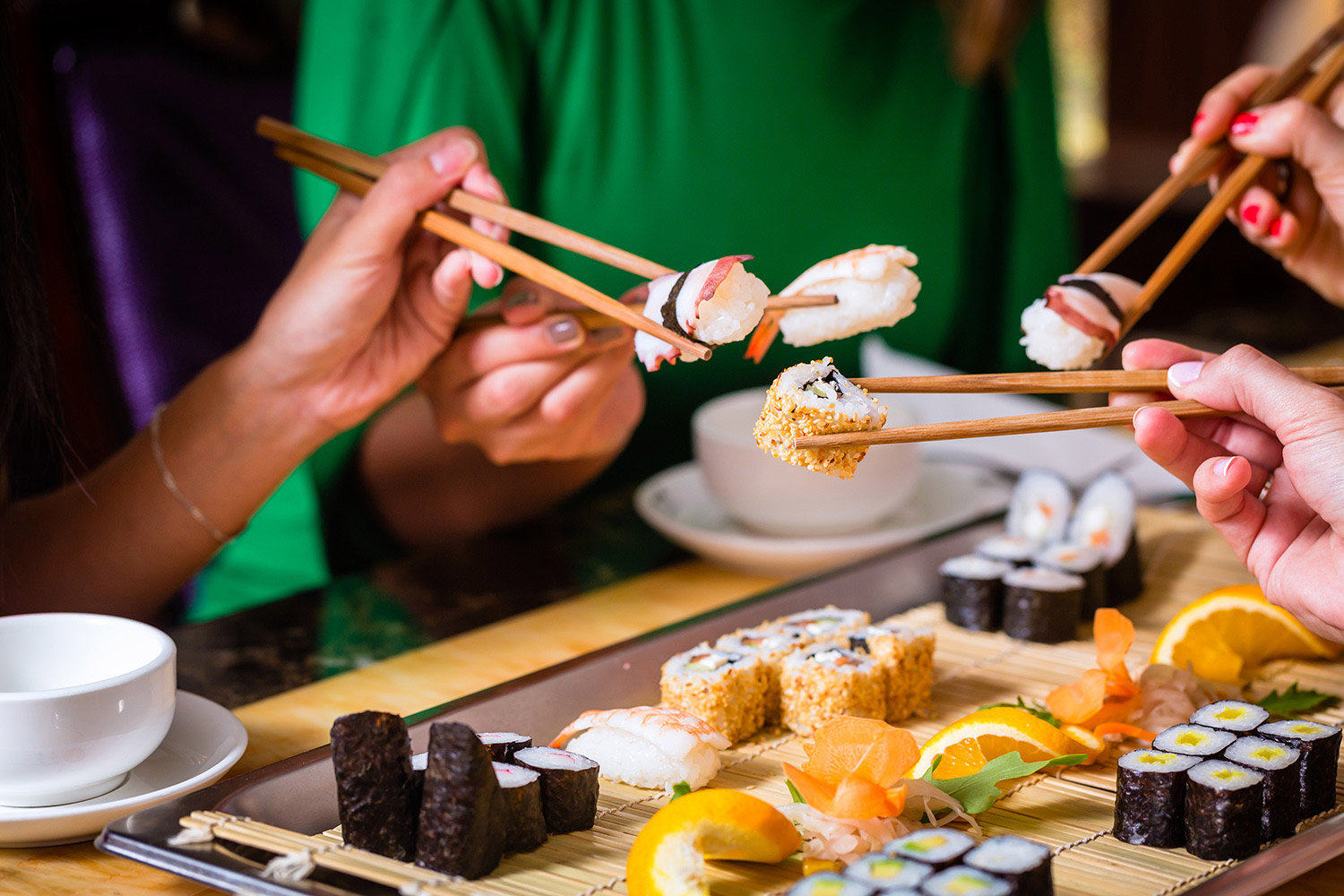

MASTER'S BOOK
JAPANESE TABLE CUSTOMS
Japanese food culture
How is Japan both traditional and modern? Japanese customs differ greatly from ours. Therefore, if you are planning to go to the Land of the Rising Sun, it is advisable to familiarise yourself with the most important rules that should be observed at the table. The greeting, the place you sit at the table, the way you eat your meal, these are all very important matters.
Japanese bowing
Japanese bowing (ojigi) is an integral part of everyday life in Japan. When greeting foreigners, the Japanese will most often extend their hand, but in a professional environment and at home, bowing is used to express various emotions. The Japanese bow as a greeting or to say goodbye, to say they are sorry and as a sign of respect. The gesture varies depending on the social status, the higher someone is on the social ladder, the lower you should bow.
Japanese greetings
Among peers, friends and colleagues, the Japanese usually greet by bowing at a 15 degree angle (eshaku). When greeting someone whose social rank is higher, a bow at a 30 degree angle (keirei) is used, and to express profound apology, a 45 degree bow is used (saikeirei). When in doubt, your safest bet is always the keirei.
Japanese table manners
Japanese tables are usually much lower that European tables, and so require assuming a different posture when sitting. The formal way of sitting is called seiza – sitting with your legs folded underneath your thighs with your buttocks resting on your heels. The casual way allows women to sit with their knees bent and both legs to one side, while men sit cross-legged. You are not allowed to blow your nose at the table, and everyone puts food on their own plate. The exception is of course pouring alcohol – leave it to your host. It is okay to slurp – it is a sign that you’re enjoying your meal (in this case, the soup).
Japanese customs
When visiting a Japanese home, be careful about the topics you mention at the table. Do not start conversations about death or illness. Expressing your gratitude is very important, so do not hesitate to thank as often as possible. Gratitude and respect are always welcome in every Japanese household. The host plays a special role in Japan – he or she sits in the central, most important seat at the table (do not steal that seat!), pours the alcohol and is the most important person during the meal. The host should always be shown utmost respect.
Finished feasting?
After you are done with your meal, the chopsticks or cutlery and dishes should be returned to how they were before you started eating. At the end of the meal, you should thank the host for the invitation and food. These simple rules will allow you to behave appropriately in every Japanese household without having to worry about making a faux pas.























